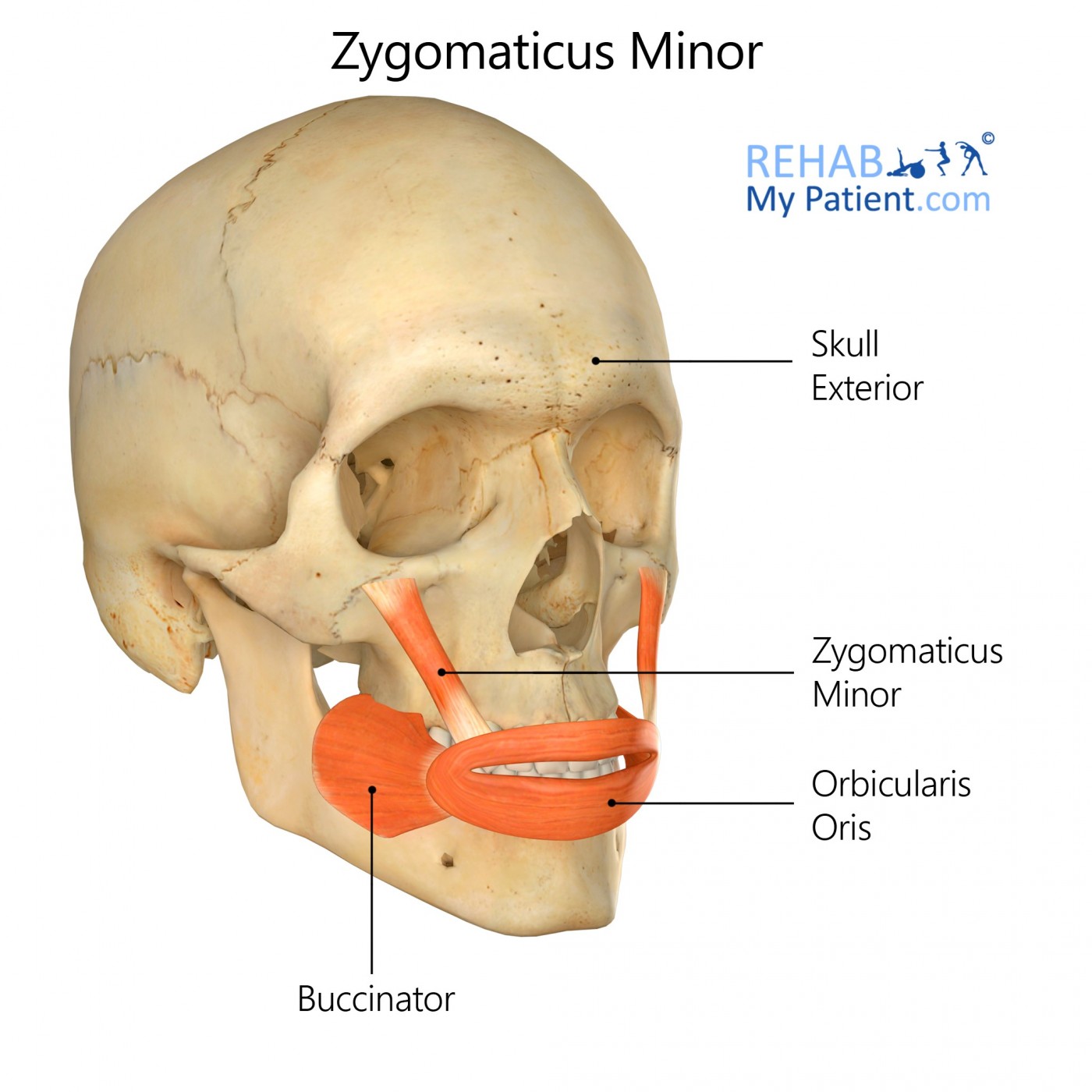Zygomaticus Minor
Posted on 30th Jul 2020 / Published in: Face

General information
The zygomaticus minor muscle is one that controls facial expressions. It originates from the malar bone and continues along with the orbicularis oculi found on the lateral face for the levator labii superioris. It is then inserted within the outer part of the upper lip. This muscle should not be confused with the zygomaticus major, which is inserted into the mouth’s angle. It works to draw the upper lip upward, backwards and outward. Along with the rest of the muscles that control facial expression, this muscle is innervated from the facial nerve.
Literal meaning
Lesser yoke.
Interesting information
Temporal tendinitis is a condition where the tendon running from the temple to the jaw becomes swollen. The inflammation can cause a significant amount of pain in the zygomaticus area, including headache, jaw soreness, eye aches and ear pain. It is often confused with traditional sinusitis, but a doctor can accurately diagnose this condition by simply palpating the tendon. Traditional treatment involves rest, anti-inflammatory medications, or a device that can help prevent teeth from clenching together. In rare instances where tissue has degenerated, it may be necessary to undergo surgery to remove the damaged tissue.
Pain in the muscle can also be the result of a fractured cheekbone. Most of the time, these fractures occur in a traffic accident, contact sport, or fall. Since the cheekbone is connected to the eye socket and the jaw, pain in the mouth or eye may also occur. Even though it may not always be visible to the naked eye, fractures can cause internal bleeding that can affect the function of the brain. A CT scan or x-ray will help determine if a fracture is present or not.
Origin
Anterolateral surface for the zygomatic bone located near the suture along with the maxillary bone.
Insertion
Blends with the fibres in the levator labii superior as both the muscles enter and blend into the fibres in the superior lip.
Function
Elevation of the upper lip.
Works alongside other muscles to help deepen the nasolabial furrow.
Nerve supply
Facial nerve.
Blood supply
Facial artery.
Transverse facial artery.

Relevant research
The purpose of the study was to clarify the anatomical location of the facial nerve branches within the periorbit and the eyelids. The facial nerve branches in the left periorbits of 31 Japanese cadavers were all examined underneath a surgical microscope. The zygomatic, temporal and deep buccal branches that were assembled posterior to the orbicularis oculi from the temporal side formed a dense plexus. The branches of the muscles ramified the lower portions of the orbicularis oculi within 65 percent of the participants and the upper 42 percent of all the specimens involved.
Nemoto Y, Sekino Y, Kaneko H. Facial nerve anatomy in eyelids and periorbit. Jpn J Ophthalmol. 2001;45(5):445-452. doi:10.1016/s0021-5155(01)00381-1
Zygomaticus minor exercises
Pout
This exercise targets the muscle that helps to protrude the lower lip and inferiorly draw it in. Stick the lower lip out and draw it into a pout position. Hold for five seconds before relaxing. Repeat the exercise a total of 10 times.

Sign UP
Sign up for your free trial now!
Get started with Rehab My Patient today and revolutionize your exercise prescription process for effective rehabilitation.
Start Your 14-Day Free Trial